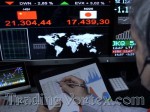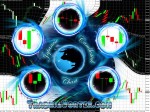Table Of Contents:
- Why Commodity Trading Matters for Beginners?
What Is Commodity Trading?
Getting Started in Commodity Trading:
Understanding Commodities and Markets:
Commodity Trading Instruments for Beginners:
Analyzing the Commodity Market:
Creating a Successful Commodity Trading Strategy:
Executing Commodity Trades:
Tips and Pitfalls in Commodity Trading:
Case Studies and Practical Examples:
Conclusion and Next Steps: - Glossary of Commodity Trading Terms:
Why Commodity Trading Matters for Beginners?
As the global economy continues to evolve and grow, commodities play a pivotal role in shaping our world. They fuel industries, feed nations, and provide the raw materials needed for countless products. Understanding commodity markets is not only intellectually stimulating but also a potential avenue for financial growth and diversification. Whether you're looking to hedge against inflation, seek portfolio diversification, or simply explore new investment opportunities, commodity trading can be a valuable addition to your financial toolkit.
However, the journey into commodity trading can be daunting for beginners. With its own unique language, intricate strategies, and the potential for significant rewards or losses, it's crucial to start with a solid foundation. This article aims to be your trusted companion on this exciting expedition. We will break down complex concepts into digestible bits, explore the diverse range of commodities available for trading, and provide actionable insights to help you embark on your trading adventure.
In the following sections, we will delve into the fundamental principles of commodity trading, discuss the types of commodities you can trade, and provide guidance on setting up your trading account. We'll also explore essential analysis techniques, risk management strategies, and the development of a successful trading plan tailored for beginners.
By the time you finish reading this guide, you'll be well-equipped with the knowledge and confidence needed to start your journey as a commodity trader. So, let's dive in and discover what commodity trading is all about, and how you can take your first steps into this captivating world.
What Is Commodity Trading?
Commodity trading is at the heart of a vast global market where raw materials, goods, and natural resources are bought and sold. For beginners, understanding what commodity trading entails is a foundational step in embarking on this financial journey.
Definition and Basics:
- Agricultural Commodities: These include crops such as wheat, corn, soybeans, and livestock like cattle. Agricultural commodities are influenced by factors like weather conditions, crop yields, and demand for food products.
- Energy Commodities: This category covers resources like crude oil, natural gas, and heating oil. Energy commodities are heavily influenced by geopolitical events, production levels, and global demand for energy.
- Metals Commodities: Precious metals like gold and silver, as well as industrial metals like copper and aluminum, fall into this category. Metal prices can fluctuate due to factors such as supply and demand imbalances and economic trends.
- Soft Commodities: Soft commodities refer to items like coffee, sugar, cotton, and cocoa. Their prices can be affected by weather patterns, disease outbreaks, and shifts in consumer preferences.
- Livestock and Meat Products: This category encompasses live cattle, pork bellies, and other meat-related commodities. Prices are influenced by factors like consumer demand and animal health.
Types of Commodities for Trading:
Commodity trading offers an extensive array of options for beginners to consider. Some of the most commonly traded commodities include:
- Crude Oil: As one of the most widely traded commodities globally, crude oil plays a central role in the energy sector. Its price is closely tied to geopolitical developments and production levels.
- Gold: Gold is a well-known precious metal that often serves as a safe-haven asset. Its price can fluctuate based on economic conditions, currency movements, and geopolitical uncertainty.
- Agricultural Commodities: Beginners can trade agricultural products like wheat, corn, and soybeans, which are influenced by factors like weather patterns, global demand, and crop yields.
- Natural Gas: Natural gas is a key energy commodity with prices that can be affected by weather conditions, production levels, and energy demand.
- Copper: As an industrial metal, copper's price is closely linked to economic trends and developments in the manufacturing and construction industries.
Benefits of Commodity Trading for Beginners:
Commodity trading offers several compelling benefits for beginners:
- Diversification: Including commodities in your portfolio can diversify your investments, reducing overall risk. They often have a low correlation with traditional assets like stocks and bonds, meaning they may perform differently under various market conditions.
- Inflation Hedge: Many commodities, particularly precious metals like gold and silver, serve as effective hedges against inflation. When the value of currencies declines due to inflation, the intrinsic value of commodities can rise, preserving your purchasing power.
- Profit Potential: Commodity markets can be highly volatile, presenting opportunities for profit. Beginners can engage in both short-term and long-term trading to capitalize on price fluctuations.
- Global Economic Insights: By monitoring commodity prices, beginners can gain valuable insights into the state of the global economy. Commodities often react to economic trends, making them indicators of economic health.
Understanding the fundamentals of commodity trading sets the stage for beginners to explore the intricacies of this dynamic market further. As we continue our journey into commodity trading, we will delve into how to get started and the strategies needed to navigate this exciting world effectively.
Getting Started in Commodity Trading:
Embarking on your journey in commodity trading is an exciting endeavor, but it's important to take the right steps to ensure a solid foundation. In this section, we'll guide you through the essential steps to begin commodity trading, help you set up your commodity trading account, and navigate crucial legal and regulatory considerations.
Steps to Begin Commodity Trading:
- Educate Yourself: Start by acquiring a solid understanding of the commodities market. Familiarize yourself with the basics, including the types of commodities, how futures and options work, and the key factors influencing commodity prices. There are numerous books, online courses, and resources available to help you build your knowledge.
- Set Clear Goals: Define your financial goals and risk tolerance. "Are you looking for short-term profits, long-term investments, or a combination of both?" Your goals will shape your trading strategy and risk management approach.
- Choose a Trading Style: Determine your preferred trading style. Commodity trading offers various approaches, including "day trading, swing trading, and long-term investing". Each style has its own set of strategies and time commitments, so choose one that aligns with your goals and lifestyle.
- Select a Commodity Broker: Your choice of a commodity broker is critical. Look for a reputable brokerage firm with a strong track record, transparent fee structures, and a user-friendly trading platform. Ensure they offer access to the specific commodities you're interested in trading.
- Practice with Paper Trading: Before risking real capital, consider practicing with paper trading or a demo account. This allows you to execute trades with virtual money, gaining valuable experience without financial risk.
- Develop a Trading Plan: Create a comprehensive trading plan that outlines your goals, strategies, risk management rules, and criteria for entering and exiting trades. A well-defined plan will help you stay disciplined and avoid impulsive decisions.
Setting Up Your Commodity Trading Account:
- Choose the Right Account Type: Depending on your trading style and objectives, select the appropriate type of commodity trading account. Common options include individual accounts, joint accounts, and retirement accounts (e.g., IRA).
- Complete the Application: Fill out the brokerage's account application, providing accurate personal and financial information. Be prepared to provide identification documents, such as a driver's license or passport.
- Fund Your Account: Once your account is approved, deposit funds into it. The amount you deposit will depend on your trading strategy and risk tolerance. Ensure you have enough capital to cover initial margin requirements and potential losses.
- Explore the Trading Platform: Familiarize yourself with the broker's trading platform. Most platforms offer real-time market data, charting tools, and order entry features. Practice executing trades on the platform to build confidence.
Legal and Regulatory Considerations for Beginners:
- Know the Regulations: Commodity trading is subject to various regulations, including those set by the Commodity Futures Trading Commission (CFTC) in the United States. Understand the rules and regulations governing commodity trading in your jurisdiction to ensure compliance.
- Risk Disclosure: Brokers are required to provide risk disclosure documents that outline the potential risks associated with commodity trading. Read these documents carefully and seek clarification from your broker if needed.
- Margin Requirements: Commodity trading often involves trading on margin, which means you can control a larger position with a relatively small amount of capital. Understand the margin requirements set by your broker and be prepared for margin calls if your account balance falls below the required level.
- Tax Implications: Commodity trading can have tax implications. Consult with a tax professional to understand how your trading activities may impact your tax liability.
Getting started in commodity trading involves a mix of education, careful planning, and adherence to regulations. By following these steps and considerations, you'll be well-prepared to enter the exciting world of commodity trading with confidence.
Understanding Commodities and Markets:
Before diving headfirst into commodity trading, it's crucial to build a solid foundation by understanding the commodities themselves and the markets in which they are traded. This section will explore what commodities are, delve into key commodity markets, and uncover the various factors that can influence commodity prices.
What Are Commodities?
Commodities are tangible goods and raw materials that can be bought and sold in standardized quantities. They are the backbone of the global economy, serving as the building blocks for countless products and industries. Here's a closer look at the different categories of commodities:
- Agricultural Commodities: These encompass crops like wheat, corn, soybeans, and livestock such as cattle. Agricultural commodities are the foundation of the food industry and are influenced by factors like weather conditions, crop yields, and changes in consumer demand.
- Energy Commodities: This category includes vital resources like crude oil, natural gas, and heating oil. Energy commodities are critical to powering economies and are heavily influenced by geopolitical events, production levels, and energy consumption trends.
- Metals Commodities: Precious metals like gold and silver, as well as industrial metals such as copper and aluminum, fall into this category. Metal prices can fluctuate due to factors such as supply and demand imbalances, economic trends, and technological advancements.
- Soft Commodities: Soft commodities refer to items like coffee, sugar, cotton, and cocoa. Their prices are particularly sensitive to weather patterns, disease outbreaks, and shifts in consumer preferences.
- Livestock and Meat Products: Live cattle, pork bellies, and other meat-related commodities are included in this category. Prices are influenced by factors like consumer demand, animal health, and industry regulations.
Key Commodity Markets:
Commodity trading takes place on various markets around the world. These markets serve as platforms for buying and selling commodities through standardized contracts. Some of the key commodity markets include:
- Commodity Futures Exchanges: These exchanges, such as the Chicago Mercantile Exchange (CME) and the Intercontinental Exchange (ICE), facilitate the trading of commodity futures contracts. Futures contracts specify the quantity, quality, and delivery date of a commodity, providing a standardized framework for trading.
- Spot Markets: In spot markets, commodities are bought and sold for immediate delivery. Spot prices are determined by supply and demand dynamics in real-time. While spot markets are important for physical transactions, they also influence futures prices.
- Commodity ETFs and Funds: Exchange-traded funds (ETFs) and mutual funds allow investors to gain exposure to commodities without trading futures contracts directly. These funds hold physical commodities or futures contracts, and their shares are traded on stock exchanges.
- Over-the-Counter (OTC) Markets: Some commodities are traded over-the-counter, where buyers and sellers negotiate directly with each other. OTC markets are less regulated than futures exchanges and are common for customized or less-standardized contracts.
Factors Affecting Commodity Prices:
Commodity prices are subject to a wide range of factors that can cause fluctuations. It's essential to be aware of these influences when participating in commodity trading. Some of the key factors include:
- Supply and Demand: The most fundamental factor, supply and demand imbalances can result from changes in production, consumption, or geopolitical events.
- Geopolitical Events: Political instability, conflicts, and changes in government policies can disrupt commodity markets and impact prices.
- Weather Conditions: Weather-related events, such as droughts, floods, and hurricanes, can affect the production of agricultural commodities and energy resources.
- Economic Indicators: Economic data, such as GDP growth, inflation rates, and unemployment, can influence demand for commodities.
- Currency Exchange Rates: Changes in currency exchange rates can affect the prices of commodities, especially those traded globally.
- Technological Advances: Advances in technology can impact the production, extraction, and use of commodities, affecting their supply and demand dynamics.
Understanding the nature of commodities, the markets they trade on, and the factors driving their prices is fundamental to successful commodity trading. Armed with this knowledge, beginners can make informed decisions and navigate the complexities of the commodity markets effectively.
Commodity Trading Instruments for Beginners:
Commodity trading offers a variety of instruments to suit different trading styles and risk preferences. In this section, we'll explore the primary commodity trading instruments that are accessible to beginners: futures contracts, options contracts, and commodity exchange-traded funds (ETFs).
Overview of Futures Contracts:
Futures contracts are one of the foundational instruments in commodity trading. They are standardized agreements to buy or sell a specific quantity of a commodity at a predetermined price on a future date. Here's how futures contracts work and why they are valuable for beginners:
- Standardization: Futures contracts are highly standardized, specifying the commodity, quantity, quality, delivery date, and delivery location. This standardization provides clarity and transparency in trading.
- Leverage: One of the key attractions of futures trading is leverage. By paying a fraction of the contract's total value (known as margin), traders can control a much larger position. This leverage can amplify both profits and losses, making risk management crucial.
- Hedging: Futures contracts are widely used by producers, consumers, and traders for hedging purposes. "For example, a wheat farmer can use a wheat futures contract to lock in a selling price, protecting against adverse price movements".
- Speculation: Futures contracts also attract speculators who aim to profit from price fluctuations. Beginners can engage in speculative trading by taking positions based on their market analysis.
Exploring Options Contracts:
Options contracts provide an alternative approach to commodity trading. Unlike futures contracts, options give the holder the right but not the obligation to buy (call option) or sell (put option) a commodity at a specific price (strike price) on or before a predetermined date (expiration date). Here's why options contracts are relevant for beginners:
- Limited Risk: One of the primary advantages of options is limited risk. When you purchase an options contract, you pay a premium, and your risk is limited to this premium. This makes options appealing for risk-averse beginners.
- Versatility: Options offer versatility in trading strategies. Traders can use options to speculate on price movements, hedge existing positions, generate income through covered calls, or protect against downside risk with protective puts.
- Leverage: Similar to futures, options provide leverage, allowing traders to control a larger position with a smaller upfront investment. This can amplify potential returns but also requires prudent risk management.
- Customization: Options contracts can be customized to suit specific trading objectives. Beginners can select strike prices and expiration dates that align with their market outlook and risk tolerance.
Using Commodity Exchange-Traded Funds (ETFs):
Commodity exchange-traded funds (ETFs) are investment vehicles that offer exposure to commodities without the need to trade futures or options contracts directly. Here's why commodity ETFs are a convenient option for beginners:
- Diversification: Commodity ETFs typically hold a diversified portfolio of commodities or commodity futures contracts. This diversification can help spread risk across multiple commodities.
- Liquidity: ETFs are traded on stock exchanges, providing high liquidity and flexibility for investors. Beginners can buy and sell commodity ETFs during regular trading hours, similar to stocks.
- Transparency: ETFs disclose their holdings and net asset value (NAV) daily, offering transparency to investors. This transparency helps beginners make informed investment decisions.
- Accessibility: Commodity ETFs are accessible to a wide range of investors, including those with smaller capital. This makes them an attractive option for beginners looking to gain exposure to commodities.
Understanding these commodity trading instruments is crucial for beginners, as they provide various avenues to participate in commodity markets. The choice of instrument should align with your trading goals, risk tolerance, and familiarity with each instrument's characteristics. Whether you opt for futures contracts, options contracts, or commodity ETFs, each instrument has its unique advantages and considerations.
Analyzing the Commodity Market:
Analyzing the commodity market is a critical aspect of successful commodity trading. This section will explore the various methods and tools available to beginners for comprehending and predicting price movements in the commodity markets. We'll cover the fundamentals of analysis, delve into technical analysis, and introduce the concept of sentiment analysis in commodity trading.
Fundamentals of Analysis:
Fundamental analysis involves examining the underlying factors that can impact commodity prices. For beginners, understanding these fundamentals is essential for making informed trading decisions:
- Supply and Demand: A fundamental principle of commodity markets is the interaction between supply and demand. Monitoring factors such as weather conditions, production levels, and consumption trends can provide insights into future price movements.
- Economic Indicators: Economic data, including GDP growth, inflation rates, and unemployment figures, can influence commodity prices. For instance, a growing economy may lead to increased demand for commodities like oil and metals.
- Geopolitical Events: Political instability, conflicts, and changes in government policies in major commodity-producing regions can disrupt supply chains and impact prices.
- Weather Patterns: Weather-related events like droughts, hurricanes, or frost can significantly affect the production of agricultural commodities, leading to price fluctuations.
- Currency Movements: Changes in currency exchange rates can influence commodity prices, especially for commodities traded globally. A weaker domestic currency can boost exports and raise prices for imported commodities.
Technical Analysis for Beginners:
Technical analysis involves studying historical price and volume data to make predictions about future price movements. It is a popular approach among traders, and beginners can benefit from these key aspects:
- Price Charts: Technical analysts use price charts to identify patterns, trends, and potential support and resistance levels. Common chart types include candlestick charts, line charts, and bar charts.
- Indicators and Oscillators: Technical analysts often rely on indicators and oscillators, such as moving averages, Relative Strength Index (RSI), and MACD (Moving Average Convergence Divergence), to spot potential buy or sell signals.
- Trend Analysis: Identifying trends is a central component of technical analysis. Traders look for uptrends (rising prices), downtrends (falling prices), and sideways trends (range-bound markets) to inform their trading decisions.
- Support and Resistance: Support levels are price levels where a commodity tends to find buying interest, while resistance levels are where selling pressure typically emerges. These levels can help traders set entry and exit points.
- Volume Analysis: Analyzing trading volume alongside price movements can provide insights into market strength or weakness. A surge in volume can indicate increased market interest.
Sentiment Analysis in Commodity Trading:
Sentiment analysis involves gauging market sentiment and emotions to anticipate price movements. While it is less quantitative than other forms of analysis, it can be valuable for beginners:
- News and Media: Pay attention to news and media coverage related to commodities. Positive or negative news can influence trader sentiment and impact prices.
- Trader Sentiment Indicators: Some platforms offer trader sentiment indicators, showing the percentage of traders who are long (expecting prices to rise) or short (expecting prices to fall). High levels of one-sided sentiment can signal potential reversals.
- Market Sentiment Tools: Utilize sentiment analysis tools, such as social media sentiment analysis, to gauge the overall sentiment in the market. Monitoring social media platforms and forums can provide insights into trader sentiment.
- Economic and Geopolitical Events: Events like elections, economic releases, or geopolitical developments can sway market sentiment. Be aware of these events and their potential impact.
By mastering these analytical approaches, beginners can develop a well-rounded understanding of the commodity market. Combining fundamental, technical, and sentiment analyses can provide a comprehensive view, helping traders make informed decisions and navigate the complexities of commodity trading.
Creating a Successful Commodity Trading Strategy:
To thrive in the world of commodity trading, it's imperative for beginners to craft a well-defined trading strategy. This section will guide you through the essential steps in creating a successful commodity trading strategy, including building a trading plan, implementing risk management techniques, and exploring diversification strategies.
Building Your Trading Plan:
A trading plan is the cornerstone of a successful commodity trading strategy. It provides a structured framework for your trading activities and helps you maintain discipline. Here's how to build an effective trading plan:
- Define Your Objectives: Start by setting clear and realistic trading objectives. "Are you aiming for short-term profits, long-term investments, or a combination of both?" Define your financial goals and time horizon.
- Select Your Trading Style: Determine your preferred trading style, whether it's day trading, swing trading, or long-term investing. Your style should align with your objectives and the time you can dedicate to trading.
- Choose Your Commodities: Select the commodities you want to trade based on your research and analysis. Consider factors like liquidity, volatility, and your level of expertise.
- Set Entry and Exit Criteria: Establish specific criteria for entering and exiting trades. This includes identifying entry points, stop-loss levels, and profit-taking targets. Having predefined rules reduces emotional decision-making.
- Risk Tolerance and Position Sizing: Determine your risk tolerance and position sizing strategy. Decide how much of your trading capital you are willing to risk on each trade. Beginners often limit risk to a small percentage of their total capital.
- Keep a Trading Journal: Maintain a detailed trading journal to record your trades, strategies, and emotions. Analyzing your past trades can provide valuable insights and help you refine your approach.
Risk Management for Beginners:
Effective risk management is crucial in commodity trading to protect your capital and ensure long-term sustainability. Here are key risk management techniques for beginners:
- Use Stop-Loss Orders: Implement stop-loss orders on your trades to limit potential losses. A stop-loss order automatically exits a trade when the price reaches a predefined level.
- Diversify Your Portfolio: Avoid putting all your capital into a single commodity or trade. Diversification involves spreading your investments across different commodities to reduce risk.
- Risk-Reward Ratio: Assess the risk-reward ratio for each trade. Ensure that the potential reward justifies the risk you are taking. A common rule of thumb is to aim for a ratio of at least 1:2.
- Position Sizing: Calculate your position size based on your risk tolerance and stop-loss level. Position sizing determines how much capital you allocate to a trade.
- Avoid Overleveraging: While leverage can amplify profits, it also increases the potential for losses. Beginners should use leverage cautiously and consider trading with reduced leverage or no leverage.
Diversification Strategies:
Diversification is a fundamental strategy to spread risk in your commodity trading portfolio. Here are diversification strategies for beginners:
- Commodity Diversification: Invest in a variety of commodities across different categories, such as agricultural, energy, and metals. This reduces exposure to the specific risks of individual commodities.
- Asset Class Diversification: Beyond commodities, consider diversifying into other asset classes like stocks, bonds, or real estate. A diversified portfolio can provide stability during volatile market conditions.
- Geographic Diversification: Explore commodities from various geographic regions to minimize risks associated with regional factors like weather patterns and geopolitical events.
- Time Horizon Diversification: Adjust your trading strategies and commodity selection based on your investment time horizon. For long-term investors, consider commodities with stable, long-term trends.
Creating a successful commodity trading strategy requires careful planning, risk management, and diversification. By building a solid trading plan, implementing effective risk management techniques, and diversifying your portfolio, beginners can enhance their chances of success in the dynamic world of commodity trading.
Executing Commodity Trades:
Once you've developed a trading strategy and are well-versed in analyzing the commodity market, it's time to execute your trades. This section will walk beginners through the process of placing and managing orders, monitoring their commodity positions, and offer valuable tips for a smoother trading experience.
Placing and Managing Orders:
- Market Orders: A market order is the simplest type of order. It instructs your broker to buy or sell a commodity immediately at the current market price. Market orders ensure quick execution but may not guarantee a specific price.
- Limit Orders: Limit orders allow you to specify the exact price at which you want to buy or sell a commodity. "For buying, set a limit order below the current market price; for selling, set it above the market price". Limit orders offer price control but may not always fill if the market doesn't reach your chosen price.
- Stop Orders: Stop orders are used to limit losses or capture profits. A stop-loss order is placed below the current market price to limit potential losses, while a take-profit order is set above the market price to secure profits. When the market reaches the specified price, these orders become market orders.
- Trailing Stop Orders: Trailing stops are dynamic stop-loss orders that move with the market price. If the commodity's price moves in your favor, the trailing stop adjusts automatically, allowing you to capture more profit. If the price moves against you, the trailing stop remains stationary.
- OCO Orders: One Cancels the Other (OCO) orders consist of two linked orders: a stop order and a limit order. When one of these orders is executed, the other is automatically canceled. OCO orders help traders manage both potential losses and gains simultaneously.
Monitoring Your Commodity Positions:
- Real-Time Monitoring: Stay connected to real-time market data to monitor your commodity positions. Most trading platforms offer live price feeds, charts, and order status updates.
- Risk Management: Continuously assess your risk exposure. Ensure that your stop-loss and take-profit orders are set appropriately and adjust them if necessary.
- Stay Informed: Keep yourself informed about relevant news and events that could impact your commodities. News can trigger sudden price movements, so stay updated.
- Record Keeping: Maintain a detailed trading journal to track your trades, strategies, and performance. Regularly review your journal to learn from both successful and unsuccessful trades.
Tips for Beginner Traders:
- Start Small: Begin with a small trading account and practice your strategies before committing more capital. This allows you to gain experience without significant risk.
- Demo Trading: Consider using a demo trading account to practice without real money. It's an excellent way to familiarize yourself with the trading platform and test your strategies.
- Risk Management: Never risk more than you can afford to lose on a single trade. Use position sizing and stop-loss orders to manage risk effectively.
- Emotion Control: Emotions can cloud judgment. Stick to your trading plan and avoid making impulsive decisions based on fear or greed.
- Continuous Learning: The commodity markets are dynamic. Stay committed to learning and improving your skills. Attend webinars, read books, and follow market analysis from trusted sources.
- Diversification: Diversify your commodity portfolio to spread risk. Avoid putting all your capital into a single trade or commodity.
- Seek Guidance: Consider seeking advice from experienced traders or mentors. Their insights and guidance can be invaluable as you navigate the complexities of commodity trading.
Executing commodity trades successfully requires a blend of strategy, discipline, and continuous learning. By mastering order types, diligently monitoring your positions, and following these tips, beginners can build a strong foundation for a rewarding commodity trading journey.
Tips and Pitfalls in Commodity Trading:
Commodity trading offers enticing opportunities, but it also comes with its share of challenges and pitfalls. In this section, we'll explore common mistakes to avoid, risk mitigation techniques for beginners, and the importance of staying informed and adapting your trading strategy.
Common Mistakes to Avoid:
- Overleveraging: One of the most common and dangerous mistakes is overleveraging, which can lead to significant losses. Beginners should use leverage cautiously and consider trading with reduced leverage or no leverage until they gain more experience.
- Lack of Risk Management: Failing to implement proper risk management techniques is a grave error. Always set stop-loss orders and manage your position sizes to protect your capital.
- Ignoring Fundamental Analysis: Relying solely on technical analysis and ignoring fundamental factors can be detrimental. A holistic approach that combines both technical and fundamental analysis is often more effective.
- Revenge Trading: Attempting to recoup losses by immediately entering new trades can lead to a vicious cycle of losses. Stick to your trading plan and avoid making impulsive decisions driven by emotions.
- Neglecting Diversification: Putting all your capital into a single commodity or trade is risky. Diversification helps spread risk, reducing the impact of poor-performing assets on your portfolio.
- Lack of Education: Trading without sufficient knowledge is akin to gambling. Invest time in learning and understanding the commodity markets before risking your capital.
Risk Mitigation Techniques for Beginners:
- Position Sizing: Determine the size of your positions based on your risk tolerance and stop-loss levels. Avoid risking more than a small percentage of your total capital on a single trade.
- Stop-Loss Orders: Always use stop-loss orders to limit potential losses. Set these orders at levels where you are comfortable with the risk, and stick to them.
- Diversification: Spread your investments across different commodities and asset classes to reduce risk. This way, a poor-performing commodity won't significantly impact your overall portfolio.
- Risk-Reward Ratio: Before entering a trade, assess the risk-reward ratio. Aim for trades where the potential reward justifies the risk you are taking, typically at least 1:2.
- Avoid Weekend Gaps: Commodity markets can experience significant price gaps over the weekend due to news events. Avoid holding positions over weekends unless you're comfortable with the risk.
Staying Informed and Adapting Your Strategy:
- Keep Abreast of News: Stay informed about economic events, geopolitical developments, and news related to the commodities you're trading. News can have a profound impact on prices.
- Adapt Your Strategy: Commodity markets are dynamic and subject to change. Be prepared to adapt your trading strategy as market conditions evolve. What worked yesterday may not work tomorrow.
- Continuous Learning: Never stop learning. Attend webinars, read books, and follow market analysis from trusted sources. The more you know, the better-equipped you'll be to make informed decisions.
- Review and Reflect: Regularly review your trades and analyze your performance. Identify strengths and weaknesses in your strategy, and use this information to refine your approach.
Commodity trading is both an art and a science, and it's a journey of continuous learning and adaptation. By avoiding common pitfalls, employing risk mitigation techniques, and staying informed, beginners can navigate the commodity markets with greater confidence and increase their chances of success.
Case Studies and Practical Examples:
In the world of commodity trading, real-life case studies and practical examples can offer valuable insights for beginners. This section will present both success stories in commodity trading and lessons learned from mistakes through case studies.
Real-life Success Stories in Commodity Trading:
- The Coffee Trader's Triumph: In the early 2000s, a coffee trader named John was well-versed in the coffee market's fundamentals and technical analysis. He observed that a severe frost had damaged coffee crops in Brazil, the world's largest coffee producer. John recognized the potential supply shortage and invested in coffee futures contracts when prices were relatively low. As the market reacted to the frost's impact, coffee prices surged, and John profited significantly from his well-timed trades.
- Gold Rush: During the financial crisis of 2008, many investors sought safe-haven assets like gold to protect their wealth. Investors who had diversified their portfolios with gold ETFs or purchased physical gold experienced substantial gains as gold prices soared. This example highlights the importance of diversification and recognizing the role of commodities in times of economic uncertainty.
Learning from Mistakes: Case Studies.
- The Oil Price Crash: In 2020, oil prices plummeted due to a combination of factors, including a price war between major oil-producing nations and reduced demand caused by the COVID-19 pandemic. Many traders and investors who failed to implement adequate risk management found themselves facing significant losses. This case underscores the importance of setting stop-loss orders and being prepared for extreme market events.
- The Grain Trader's Misjudgment: A grain trader named Sarah placed large bets on soybean futures contracts based on a bullish outlook for the crop. However, unexpected trade tensions led to reduced soybean exports to a key market, causing soybean prices to drop. Sarah's lack of diversification and overreliance on a single commodity resulted in substantial losses. This example emphasizes the need for diversification and monitoring geopolitical events.
These case studies illustrate that success in commodity trading can be achieved through a combination of market knowledge, strategic thinking, and prudent risk management. They also highlight the potential consequences of neglecting key principles such as diversification and risk mitigation. Beginners can draw valuable lessons from these real-world examples to navigate the complex world of commodity trading more effectively.
Conclusion and Next Steps:
In the journey of exploring commodity trading as a beginner, you've embarked on a path filled with opportunities and challenges. Commodity trading is a dynamic and multifaceted arena that offers the potential for profit and growth, but success requires knowledge, discipline, and resilience. As we wrap up this guide on "Commodity Trading for Beginners: What It Is and How to Start", let's summarize the key takeaways and offer some encouragement for your future endeavors in the world of commodities.
Summarizing Key Takeaways:
Throughout this guide, you've gained insights into the following critical aspects of commodity trading:
- Understanding Commodities: You've learned about the various types of commodities, the key markets where they are traded, and the factors that can influence their prices.
- Trading Instruments: You've explored different trading instruments, including futures contracts, options contracts, and commodity ETFs, each with its unique characteristics and advantages.
- Analysis Techniques: You've been introduced to fundamental analysis, technical analysis, and sentiment analysis as tools to understand and predict commodity price movements.
- Creating a Strategy: You've discovered the importance of building a trading plan, practicing risk management, and diversifying your portfolio to create a successful commodity trading strategy.
- Executing Trades: You've learned how to place and manage orders, monitor your positions, and apply tips to navigate the challenges of trading.
- Learning from Real-life Examples: You've gained insights from both success stories and case studies, providing practical lessons for your commodity trading journey.
Encouragement for Beginner Traders:
As a beginner, it's essential to recognize that success in commodity trading takes time and effort. Embrace these principles as you move forward:
- Education: Continue to expand your knowledge. The commodity markets are ever-evolving, and staying informed is key to making informed decisions.
- Discipline: Stick to your trading plan, and avoid making impulsive decisions based on emotions. Discipline is crucial for long-term success.
- Risk Management: Never underestimate the importance of risk management. Protect your capital with stop-loss orders and position sizing.
- Diversification: Diversify your portfolio to spread risk. Avoid overconcentration in a single commodity or trade.
- Adaptation: Be prepared to adapt your strategy as market conditions change. Flexibility and the ability to learn from both successes and mistakes are valuable assets.
Continued Learning and Improvement:
Your journey into commodity trading is just beginning, and it's a path that can lead to financial growth and personal development. Whether you're drawn to the exciting world of energy commodities, the intricacies of agricultural markets, or the stability of precious metals, remember that success in commodity trading is attainable with dedication and a commitment to learning.
Continue to seek knowledge through books, online resources, and mentorship. Practice your strategies in demo accounts to refine your skills. As you gain experience, consider expanding your portfolio and exploring more advanced trading techniques.
Remember that setbacks are a part of the journey, but they also offer valuable lessons. Stay patient, stay disciplined, and stay curious. The world of commodity trading is waiting for you to explore, and with the right approach, you can unlock its potential and pave the way to a prosperous future.
Your next step? Dive in, learn, and embrace the exciting challenges and opportunities that commodity trading has to offer. Best of luck on your trading journey!
Glossary of Commodity Trading Terms:
Commodity trading has its own set of specialized terminology. This glossary provides definitions for key terms and phrases commonly used in the world of commodity trading:
- Commodity: A raw material or primary agricultural product that can be bought and sold, such as oil, gold, wheat, or coffee.
- Futures Contract: A standardized agreement to buy or sell a specific quantity of a commodity at a predetermined price on a future date.
- Options Contract: A contract that grants the holder the right (but not the obligation) to buy (call option) or sell (put option) a commodity at a specified price within a set period.
- Exchange-Traded Fund (ETF): A fund that tracks the performance of a commodity or a group of commodities and is traded on stock exchanges like a stock.
- Spot Market: The market where commodities are bought and sold for immediate delivery and settlement, as opposed to futures or options contracts.
- Leverage: The use of borrowed funds (margin) to increase the size of a trading position. Leverage can amplify both profits and losses.
- Margin: The amount of money or collateral that a trader must deposit with a broker to cover potential losses from a trade.
- Long Position: A position in which a trader buys a commodity with the expectation that its price will rise, allowing them to sell it at a profit.
- Short Position: A position in which a trader sells a commodity with the expectation that its price will fall, allowing them to buy it back at a lower price to profit from the difference.
- Hedging: Using commodity contracts to protect against potential price fluctuations by locking in prices in advance.
- Speculation: The practice of trading commodities with the primary goal of profiting from price fluctuations, rather than for physical delivery or hedging.
- Bull Market: A market characterized by rising commodity prices, often driven by optimism and strong demand.
- Bear Market: A market characterized by falling commodity prices, often driven by pessimism and weak demand.
- Diversification: Spreading investments across different commodities or asset classes to reduce risk.
- Volatility: The degree of price fluctuation in a commodity's value over time. Higher volatility implies greater price swings.
- Liquidation: The process of selling off positions to close out trades and settle financial obligations.
- Market Order: An order to buy or sell a commodity at the current market price, executed immediately.
- Limit Order: An order to buy or sell a commodity at a specific price or better. It is only executed when the market reaches the specified price.
- Stop-Loss Order: An order placed to limit potential losses by automatically selling a commodity when its price reaches a predefined level.
- Risk-Reward Ratio: A ratio that measures the potential profit compared to the potential loss in a trade.
- Fundamental Analysis: The analysis of economic, supply and demand, and geopolitical factors that can influence commodity prices.
- Technical Analysis: The study of historical price and volume data to forecast future price movements and identify trading opportunities.
- Sentiment Analysis: Assessing market sentiment and emotions to anticipate price movements based on the crowd's perception.
- Liquidity: The ease with which a commodity can be bought or sold without significantly affecting its price.
- Broker: A financial intermediary who facilitates commodity trades on behalf of clients.









































